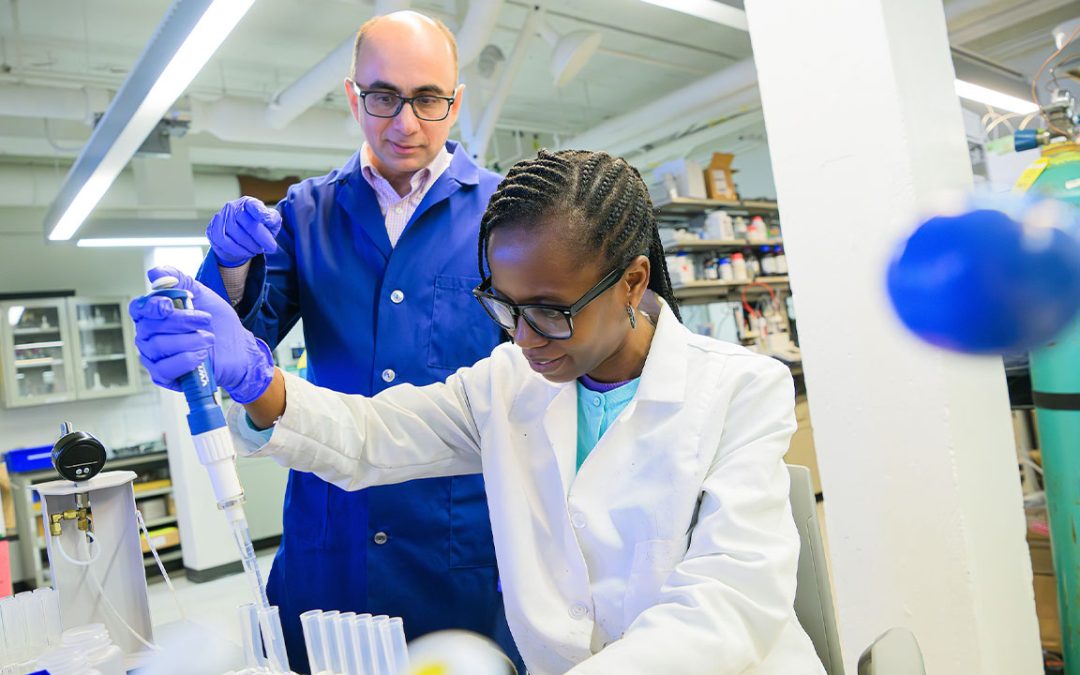by MARY CATHERINE GASTON
Growing up in India’s water-scarce environment, Auburn University biosystems engineering professor Puneet Srivastava understood from an early age the importance of clean water. It was his graduate school experience studying ecosystems, however, that led to his fascination with water resources and the environment.
Trained as a biological and agricultural engineer, first in India and then in the U.S., Srivastava is now one of a few pioneers in the emerging field of ecological engineering, and he’s helping develop Auburn’s program in that discipline into a model for the nation.
If you’ve never heard of ecological engineering, you’re not alone. It really is that new. Srivastava describes it as “the design of sustainable ecosystems that integrate human society with the natural environment for the benefit of both.” He also points out that there are some key differences between ecological engineering and other engineering fields, including its emphasis on natural systems and processes to solve ecosystem problems.
Take, for example, a design challenge that three Auburn students mastered, claiming first place in a competition during the 2014 international conference of the American Ecological Engineering Society. Student teams were charged with designing a system that would utilize natural processes to dissipate wave energy in order to reduce costly and hazardous coastline erosion. While the traditional solution to this problem has involved building a solid wall of some sort—be it a rock jetty or concrete seawall—to prevent wave action from reaching a shoreline, the task of the student teams was to find a way to use natural conditions and processes to calm the waves without dramatically altering the ecosystem.
The Auburn students designed a floating, porous system consisting of large sock-like containers filled loosely with mulch. The prototype constructed for the competition outperformed more traditional designs, says biosystems engineering master’s student Ryan McGehee, who is studying under Srivastava. In a real-world setting, the “socks” would be strung together in a long line skirting the vulnerable coastline, something that homeowners or local governments could do easily and at minimal cost.
Coastline erosion is just one of many challenges that ecological engineers must be prepared to address in the coming decades.
“I see that water resource problems and the need to protect our ecosystems will increase because of the rapid population growth, urban sprawl and climate change that we are experiencing throughout the world,” Srivastava says. “As science advances and we learn more about how greatly our existence is dependent on the ecosystem we live in, the more value ecological engineering will receive.”
Seeing these needs, and realizing that most Auburn biosystems engineering students were more interested in working outdoors solving problems than indoors at their computers, Srivastava and colleagues in the colleges of Agriculture and Engineering invested significant time and effort establishing an ecological engineering major here. In 2010, the team received approval from the Alabama Commission on Higher Education to begin offering the new curriculum, and the first classes were offered that fall.
While Auburn’s program was not the first in the nation—that distinction belongs to Oregon State—leaders such as Srivastava and fellow biosystems faculty members Oladiran Fasina and David Blersch have been instrumental in spreading the curriculum to other institutions. And, Srivastava predicts, if programs such as Auburn’s continue to demonstrate success in student enrollment, enjoyment and post-graduation job offers, the curriculum will be established at universities across the U.S. within a decade.
Srivastava has enjoyed helping develop and grow the field, but he is also interested in how well-prepared ecological engineers can improve life in Alabama, a state with abundant water resources and extraordinary biodiversity.
“We need to utilize the plentiful water available to us to grow our economy, but do it in such a way that it leaves minimal or no impact on our ecosystems,” he says. “The ecological engineers we prepare will have the capability to achieve these goals and improve the quality of life of all Alabamians.”
As an Alabama Agricultural Experiment Station researcher in the Department of Biosystems Engineering, Srivastava frequently answers questions with practical applications for Alabama farmers—how phosphorous from poultry litter fertilizer makes its way to surface water, for instance, and how that water can be used for irrigation without altering the ecology of connected streams. Currently, he and his team are examining how climate change may affect the frequency and severity of droughts in the state and make the state’s soils more vulnerable to erosion.
Srivastava recently was named Auburn University’s Butler-Cunningham Eminent Scholar in Agriculture and the Environment and is enthusiastic about the platform the position will give him to bring attention to what ecological engineers do and to the new curriculum he helped establish.
“I am a strong proponent of interdisciplinary, collaborative research and plan to continue to bring people together from across this university to address challenging water resource problems,” he says.





